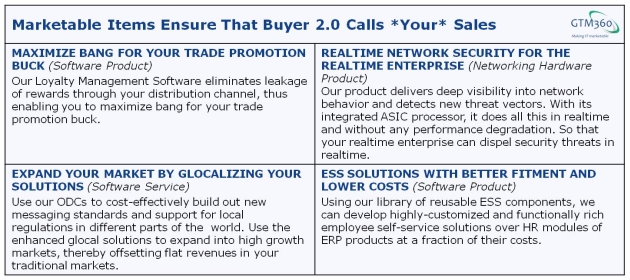In What Happens Before A Prospect Contacts Sales?, we’d shared CEB’s finding that B2B prospects complete 57% of their purchasing decision before contacting sales.
As we saw in that post, the new Internet-powered purchasing process introduces a blindzone in the purchase process.
Unless navigated successfully, this blindzone will lead to a situation where the Buyer 2.0 doesn’t call your salesperson even when they do call a salesperson.
To understand the concept of blindzone and appreciate its implication on B2B sales, we’ll take the following scenario at a big-box retailer:
- Have pain: Pilferage from warehouse
- Acknowledge need to solve pain: Audit report shows 8% loss owing to pilferage. With razor-thin margins, company can’t afford pilferage, ergo this pain must be solved.
- Explore alternative solutions to fulfill need: (A) Double down on security staff in the warehouse (B) Install CCTV surveillance in the warehouse (C) Tag all items with RFID
- Decide on one solution: CCTV
By the time the prospect reaches out for the phone at this juncture, it will be to call CCTV suppliers. If you’re an RFID supplier, you won’t get his call.
Therefore, to win in the Buyer 2.0 era, vendors will need to navigate the blindzone successfully.
Key to doing that is to engage with the prospect earlier than before. In most purchase journeys, it’s between Step 2 and 3 in the above exhibit when the prospects’ requirements are not fully crystallized i.e. when they have “emerging needs”.
Accordingly, the RFID sales rep in the above example will need to engage with the retailer at Step 2. If she waits for the retailer to call her at Step 7, she’d have to wait endlessly, like the proverbial wait for Godot in the famous Samuel Beckett play, since the prospect will call the CCTV supplier.
I can hear detractors asking whether the prospect would be ready to engage with sales earlier. Our experience says yes. So does research from analysts. According to this Gartner report, a majority of surveyed B2B technology buyers showed a “willingness to connect earlier in the process”.
But this is subject to a major caveat: Overtures at earlier stages will work only if the supplier adopts the right messaging.
In the past, when she got the call at Step 7, the RFID sales rep would have used content to highlight the superiority of her RFID solution versus those of her RFID competitors. That will not work at Step 2 or 3. What she needs is messaging that highlights why RFID technology in general – regardless of the vendor – is the right solution for the customer’s situation (as against alternatives like A and B above).
In short, it’s no longer about “My RFID versus Your RFID” but “Why RFID at all?”.
In a generic context, conventional “solutions selling” or “benefits selling” or “case study selling” approaches won’t work. When their needs are nebulous, prospects won’t vibe with features and benefits of a specific product, no matter how powerful they are or how many customers swear by them.
It’s like describing the advantages of Crocin versus Dispirin and supplying tons of testimonials from Crocin customers to a guy who doesn’t know what a headache is. No matter how well you do your job, your your pitch will fall flat.
What should suppliers do, then?
Adopt Challenger Marketing.
In this approach, CEB advocates sales reps to
- proactively share insights into pains / needs of other companies in the same industry
- show evidence of how their product alleviated / fulfilled them, and
- explain how they can do the same for the prospect’s company as well.
At Step 1, can suppliers ask prospects what their pains / needs are?
NO!
As markets get crowded, prospects don’t have the time and energy to discuss their pains and needs with every vendor who knocks on their doors. (To understand how severe this problem is, see Small Conversion Can Still Mean Big Business for the example of the large European bank that told me that they were contacted by around 50 IT vendors in a typical week, of which they could spare the time to meet only one.)
Then, how can a supplier accomplish the goal of engaging earlier?
By using Marketable Items.
Marketable Items package product features and service capabilities into compelling reasons to buy that resonate strongly with industry hot topics and business pain areas of the target market.
Using Marketable Items created by us, IT vendors engage earlier with prospects and dislodge incumbent vendors in their “must-have” accounts. If you need help in doing the same, please contact us.




